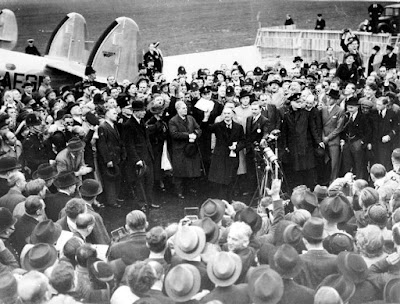Image size: 1600 x 1600 pixel. 519 KB
Date: Tuesday, 6 June 1944
Place: Omaha Beach, Normandy, France
Photographer: Robert F. Sargent
In what has become one of the most famous photographs of D-Day, Chief Photographer’s Mate Sargent captures the men of the same assault boat team seen in his previous photograph as they wade through the surf in front of the Easy Red sector of Omaha Beach at approximately 7:30 a.m. on June 6, 1944. These E Company / 16th Infantry Regiment /1st Infantry Division ("The Big Red One") troops are assaulting the area between Exit E-1 and Exit E-3 under fire from Widerstandsnest 62 and Widerstandsnest 65. On the beach directly ahead of the ramp can be seen M4 Sherman tank Number 9 from A Company, 741st Tank Battalion.While capturing an iconic moment of the twentieth century, this photograph is also perhaps one of the most frequently incorrectly attributed. Often it is credited as part of the series of eleven shots taken by the famous Life magazine photographer, Robert Capa. The photograph was in fact taken by Robert F. Sargent, Chief Photographer’s Mate, United States Coast Guard. Landing craft operated by the Coast Guard continuously ferried soldiers from ships to the Normandy shore: the photograph was titled 'Taxis to hell – and back – into the jaws of death'. The combat photographs taken at Omaha beach by Sargent and Capa have become symbolic of something bigger than just a single moment in time. They have come to represent, in the words of Churchill, “much the greatest thing we have ever attempted”.
Source :
U.S. Coast Guard Collection in the U.S. National Archives 26-G-2343
"The Americans on D-Day: A Photographic History of the Normandy Invasion" by Martin K.A. Morgan
https://www.awm.gov.au/wartime/66/Capa
https://www.awm.gov.au/wartime/66/Capa















































